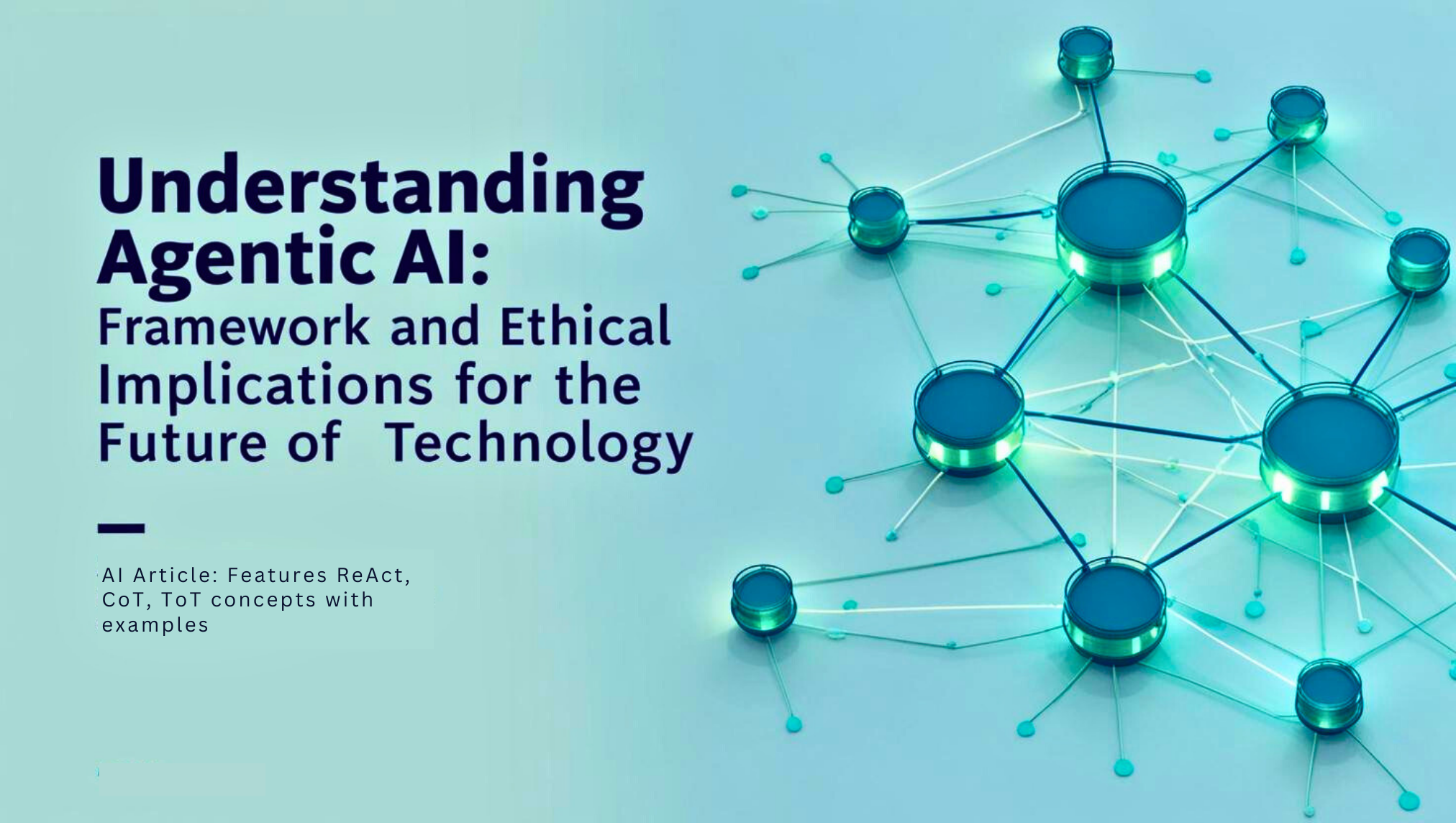Artificial Intelligence (AI) has evolved rapidly, giving rise to increasingly sophisticated systems that can perform complex tasks with minimal human intervention. Among these advancements is the concept of Agentic AI, which refers to AI systems designed to act autonomously with decision-making capabilities resembling those of human agents. As we move toward a future where Agentic AI becomes integral to various domains, understanding its frameworks, applications, and ethical implications is essential.
What Is Agentic AI?
Agentic AI refers to autonomous systems capable of independent decision-making, proactive problem-solving, and adaptive learning within predefined or evolving constraints.
Unlike traditional AI systems that follow static, rule-based programming, Agentic AI exhibits qualities such as goal orientation, contextual understanding, and self-directed learning. These systems emulate human-like agency by analyzing data, identifying patterns, and taking actions aligned with specific objectives.
Frameworks for Developing Agentic AI
The development of Agentic AI requires robust frameworks that combine principles of machine learning, behavioral science, and computational ethics. Key components include:
Agentic AI Framework
In the rapidly advancing field of artificial intelligence, frameworks like ReAct, Chain of Thought (CoT), and Tree of Thought (ToT) play pivotal roles in enhancing the reasoning, decision-making, and problem-solving capabilities of AI systems. These frameworks align with the principles of Agentic AI, empowering systems to act autonomously, logically, and adaptively in complex environments.
1. ReAct: Reasoning + Acting
The ReAct framework integrates reasoning and action, enabling AI systems to think through problems and interact with tools or environments dynamically.
Instead of separating planning from execution, ReAct merges the two in a feedback loop, allowing for real-time adjustments.
This approach is particularly effective for tasks that require immediate action and iterative refinement, such as conversational AI, autonomous systems, and robotics.
Key Features:
- Combines reasoning with actionable steps.
- Adapts strategies dynamically based on real-time feedback.
- Suitable for environments requiring interaction, like tool-augmented AI systems.
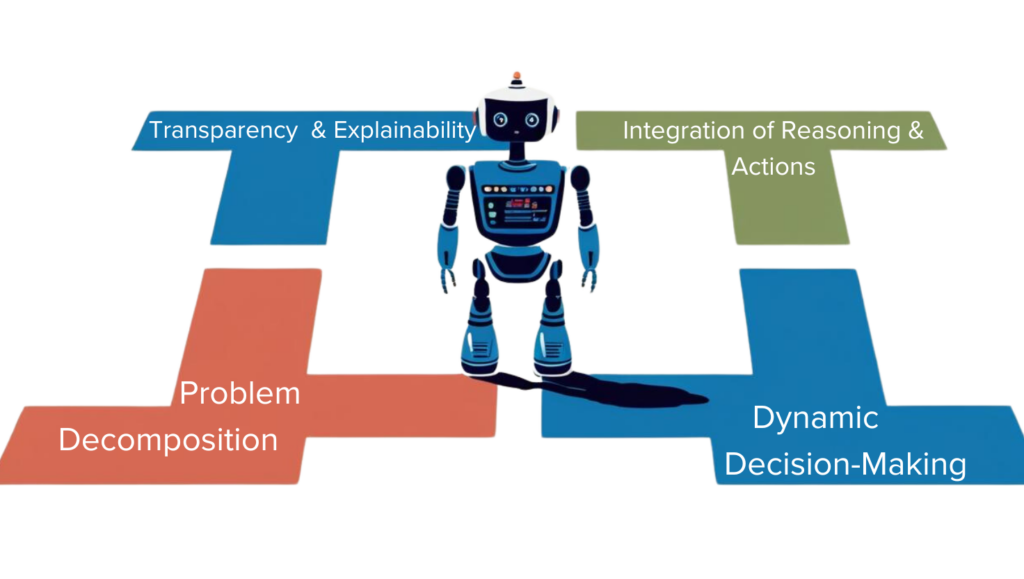
2. Chain of Thought (CoT)
Chain of Thought focuses on structured, step-by-step reasoning, encouraging AI to break down problems into smaller, logical components.
This method enhances the system’s ability to handle multi-step problems and provides transparency in decision-making, making it highly effective for applications in mathematics, decision support, and educational tools.
Key Features:
- Promotes intermediate reasoning steps for complex tasks.
- Improves explainability by showing the thought process.
- Ideal for domains requiring precision, such as diagnostics or legal reasoning.
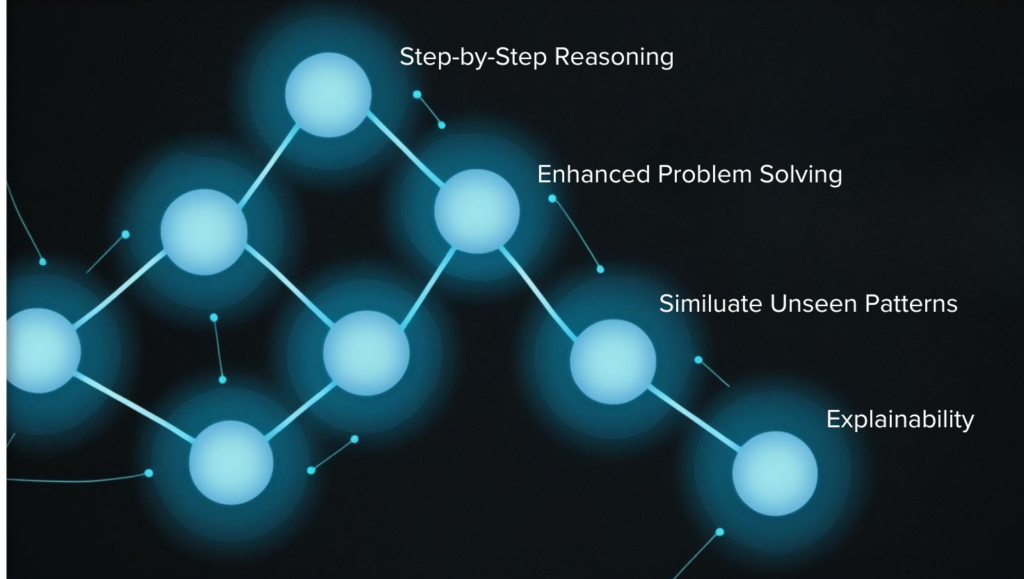
3. Tree of Thought (ToT)
The Tree of Thought framework extends CoT by exploring multiple reasoning paths simultaneously.
Structured like a decision tree, it allows AI to evaluate alternatives, backtrack, and optimize solutions dynamically.
ToT is particularly powerful for strategic decision-making, creative problem-solving, and multi-agent interactions.
Key Features:
- Organizes reasoning as a tree, with branching paths for exploration.
- Enables dynamic backtracking and refinement.
- Useful for tasks requiring optimization, such as game strategy, planning, or research.

How it works:
Key Insights:
- ReAct focuses on real-time reasoning and action, making it ideal for dynamic environments.
- CoT ensures precise, step-by-step logical reasoning, making it suitable for structured tasks like calculations or diagnostics.
- ToT explores multiple possibilities to find the optimal solution, making it highly effective for strategic and exploratory tasks.
Ethical Implications:
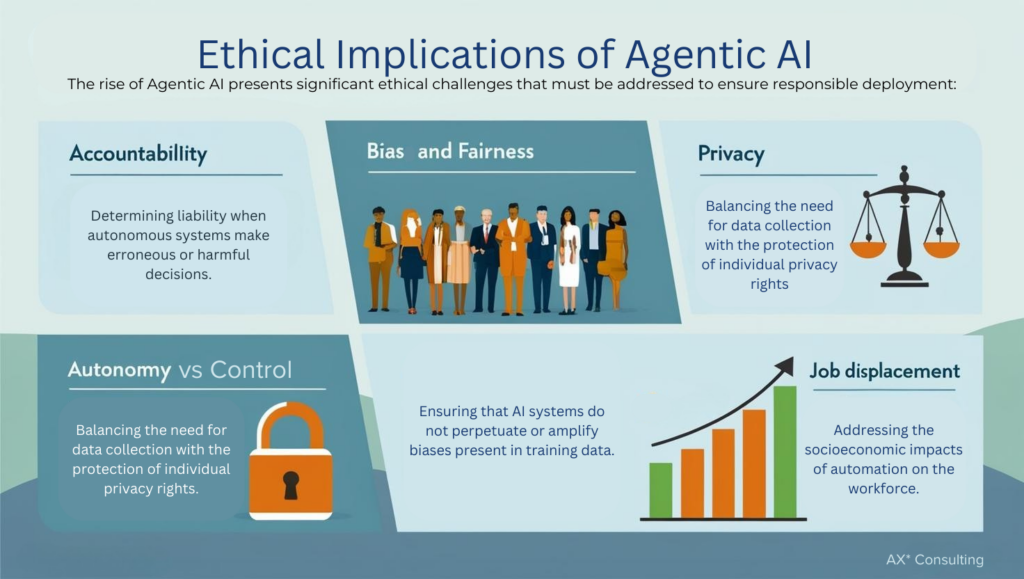
Shaping the Future of Agentic AI
To harness the potential of Agentic AI while mitigating risks, stakeholders across academia, industry, and government must collaborate on several fronts:
- Regulation: Developing global standards and regulatory frameworks that govern the design, deployment, and use of Agentic AI.
- Education: Equipping professionals and the public with knowledge about AI capabilities and limitations.
- Research: Advancing interdisciplinary studies to address technical, ethical, and societal challenges.
- Inclusion: Ensuring diverse representation in AI development to reduce bias and create equitable solutions.
Asteriqx Consulting Services
At ASTERIQX Consulting, we view Agentic AI as a catalyst for innovation and progress across industries. However, this transformative potential must be harnessed responsibly. Our commitment is to help organizations navigate the complexities of Agentic AI by providing strategic guidance, robust frameworks, and practical solutions.
As part of our service portfolio, we offer GEN AI Ethics Services, focusing on:
- Designing ethical governance frameworks for AI systems.
- Conducting bias audits and ensuring fairness in AI models.
- Providing training on ethical AI practices for organizational leaders.
- Developing strategies to align AI applications with regulatory and societal expectations.
By integrating ethical considerations into AI development and deployment, we empower businesses to unlock the full potential of Agentic AI while safeguarding human values. Together, let’s shape a future where technology serves as a trusted partner for sustainable progress.
Empower your organization to lead responsibly in the AI era
Contact ASTERIQX Consulting to learn how we can help you adopt Responsible AI practices that align with your ethical, regulatory, and business objectives.

